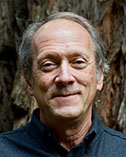
Richard S. Lewis
Stanford University
|
Primary Section: 23, Physiology and Pharmacology Membership Type:
Member
(elected 2020)
|
Biosketch
Richard Lewis is a physiologist recognized for his work on signaling by store-operated calcium channels. His major contributions include the original discovery of these channels in T lymphocytes and the characterization of their biophysical properties and mechanism of activation, as well as their roles in controlling gene expression, lymphocyte motility and immune synapse organization and dynamics. Lewis was born in Pasadena, California and grew up in nearby Arcadia after early detours to Nebraska and Kansas. He graduated from Yale University in 1978 with a degree in molecular biophysics and biochemistry and earned his Ph.D. in neurobiology at Caltech in the lab of Dr. James Hudspeth in 1985. As a postdoctoral fellow with Dr. Michael Cahalan at UC Irvine, he discovered new types of potassium, chloride, and calcium channels in T lymphocytes. In 1990 he joined the faculty of Stanford University where he is currently a Professor in the Department of Molecular and Cellular Physiology and served as Department Chair from 2004 to 2009.
Research Interests
Richard Lewis’s laboratory studies the molecular mechanisms that regulate store-operated calcium channels and their roles in T lymphocytes. These widely expressed channels are of particular interest because of their essential role in initiating the immune response as well as their unique properties and mode of activation. The Lewis group revealed how oscillatory patterns of calcium entry contribute to the selective activation of T-cell transcriptional pathways and the arrest of developing motile T cells at sites of self-antigen recognition. In mature T cells, store-operated calcium entry promotes cytoskeletal reorganization and dynamics essential for the formation and function of the immunological synapse. Lewis’s group has described the basic choreography underlying this unique calcium entry mechanism, in which depletion of calcium from the endoplasmic reticulum (ER) is sensed by STIM proteins, driving their co-accumulation with Orai channels at ER-plasma membrane junctions through a passive diffusion-trap mechanism. After having identified the region of STIM that binds to and opens the Orai channel, the lab is applying single-molecule FRET and cryo-electron microscopy approaches to understand how ER calcium depletion triggers the massive structural changes that enable STIM to bind Orai and to reveal the structure of the STIM-Orai open channel complex.

